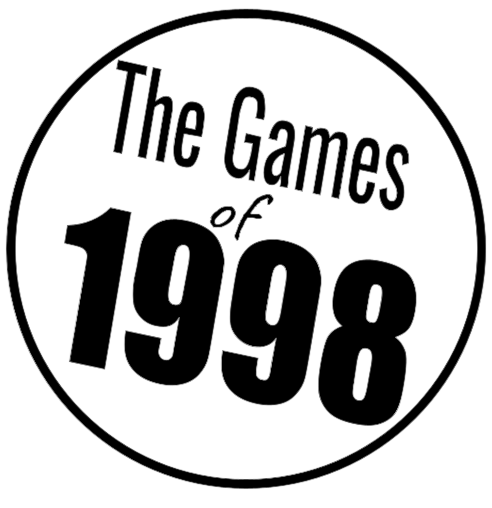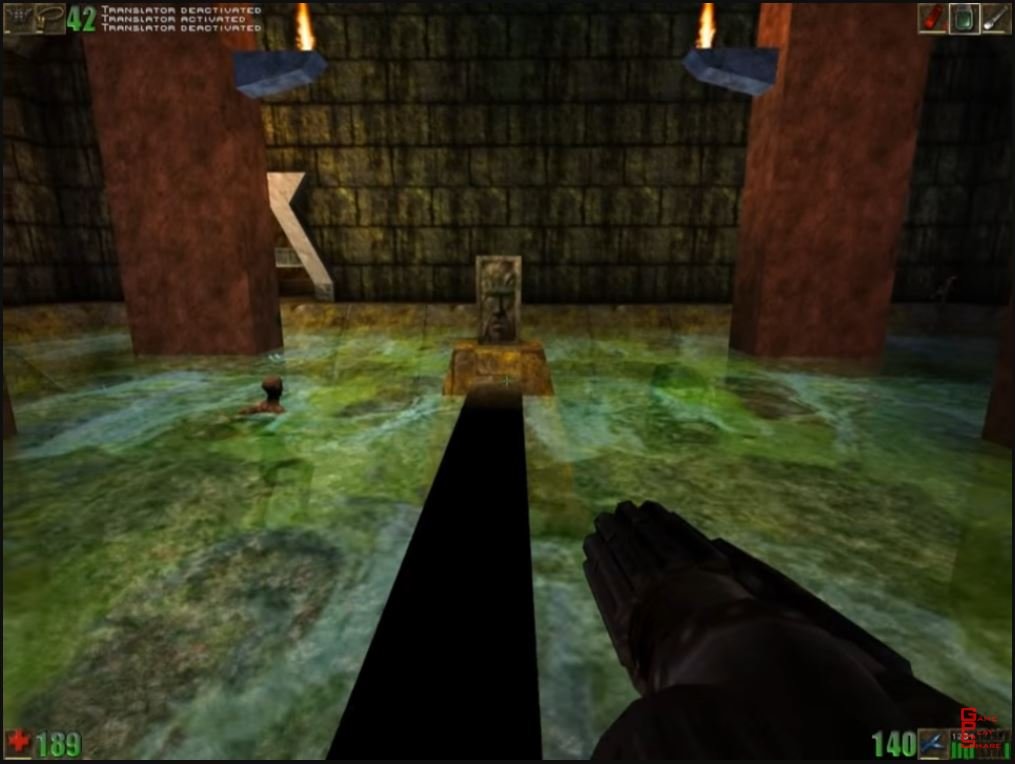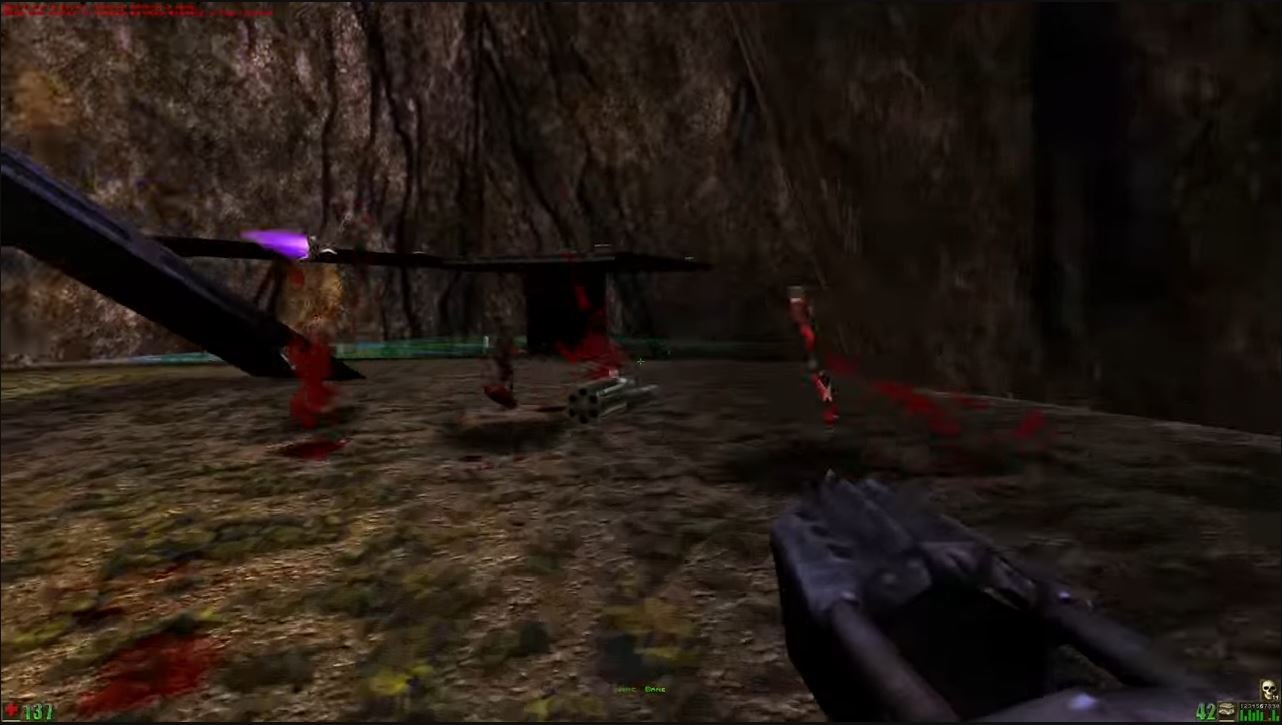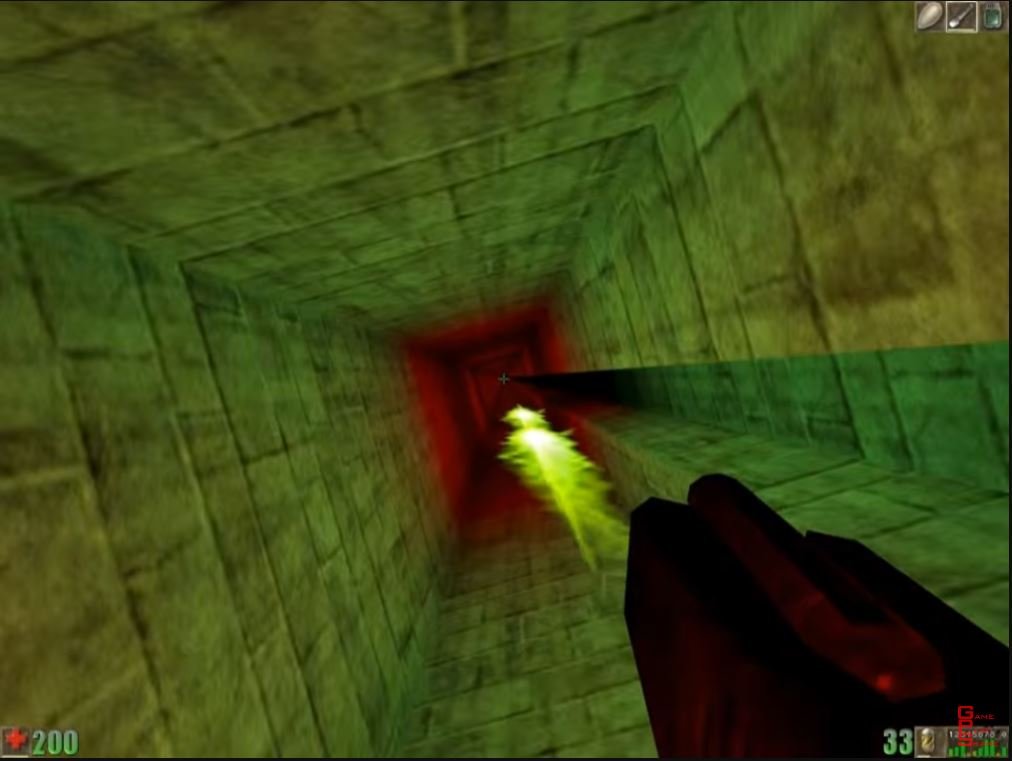Unreal
Release Date - May 22, 1998 (NA)
Developer - Epic MegaGames, Digital Extremes
Publisher - GT Interactive
Platform - PC
Few games can live up to their name as well as Unreal did. Seeing this game in action in 1998 definitely felt like you were viewing the impossible.
Some of the most impressive graphics ever seen were on display, and the four year development cycle meant that the team at Epic MegaGames would be incorporating all the improvements the industry saw along the way. The game went so far as to include a note to ‘hardcore gamers’ in the box to explain that this game is pushing the limits of what is possible, so please understand that you may need regular patches for the best performance!
Yes, that’s a lot of blood. Things aren’t looking good on your spaceship. Apart from the textures and lighting, those look phenomenal.
(Screenshots are from https://www.youtube.com/watch?v=4rwVQfYDAZA unless otherwise indicated)
The pedigree of technical mastery was on display the minute you loaded up the game, with the now famous castle fly-by demo. As the camera flew around an impressively modelled castle, you can’t help but be impressed with what’s on display; incredibly detailed texture-mapped environments, real time coloured lighting, fog, transparent water effects, reflections, lens flare… this was absolutely a tour de force from Unreal.
Once players picked their jaw off the floor (and likely played around with the settings to optimise the game for their PC, unless they were lucky enough to have access to a very expensive and powerful computer), the game threw them into the adventure; you play as Prisoner 849, a convict that wakes up in a seemingly derelict prison. It turns out that Prisoner 849 was in transit via a transport vessel currently under siege from an unknown threat. During the chaos the prison holding cells were damaged, and most of the other prisoners and crew members were killed. Players must rely on the written logs and environmental clues around them to piece together what has happened as they try to make their way off the besieged ship. During your exploration you’ll hear blood-curdling screams of crew members meeting their fate, it’s clear that whatever attacked the ship is still on board. The storytelling is excellent in this opening chapter, and is helped along by the fantastic immersion and atmosphere that is aided by the graphics. The area is a feast for the eyes and exploring is it’s own reward. Before too long however, you’ll encounter your first alien enemy and the action will kick off.The planet you’ve landed on is home to the native Nali race, but an invading force known as the
Getting off the ship and seeing the planet’s surface for the first time is quite the experience.
The enemy is a race of aliens known as the ‘Skaarj’. The ship you were on board has crashed into the planet Na Pali, where the native civilisation of ‘Nali’ are losing an existential war against the Skaarj invaders.
Na Pali is a planet with some really beautiful locations, and Unreal thrives in taking players to varied locations. The breadth of scenery is demonstrated early, as you escape the crashed ship, a very cold, human and industrial looking area, and find yourself in a wide open and untouched alien landscape, complete with native plants, wild animals and even waterfalls. Later on you’ll be exploring caverns, Nali fortresses and even churches and ornate monasteries. The huge structures and big outdoors areas do their best to show off the pure technical wizardry Unreal is capable of.
Unreal featured some huge outdoor areas which were quite rare in games, and impressive to witness.
While the game is fondly remembered for the visual side, the soundtrack is well worth noting. Music fits the locations and atmosphere with a synth and electronic soundtrack that’s somewhat reminiscent of Sci-Fi films like The Thing or Planet of the Apes. Like those movies, it evokes a feeling of the unknown with a series of tracks that are off-beat and unsettling. Sound effects are also top-notch, with the sound design on the weapons being particularly memorable and iconic. You’ll feel a rush of anticipation every time you hear the chunky mechanical noise of a rocket being loaded into the barrel.
Speaking of the weapons, Unreal deserves praise for the great arsenal to get to grips with. Ten weapons feature, all of them with a secondary fire capability making for fantastic variety and utility. The secondary fire features range from the somewhat mundane (but fun) like firing your pistol sideways (which inexplicably gives you double the firing rate but half the accuracy) through to some genuinely game-changing abilities. The Shock Rifle for example, fires an energy beam directly ahead in primary fire, with secondary fire being a slow moving ball of energy. Not that interesting on its own for sure, but then you realise that firing the primary fire into the slow moving projectile causes a massive explosion when they collide, leading to a difficult to use but supremely rewarding weapon! Unreal takes full advantage of the alien setting with some cool and creative weapons too; the Razorjack for example fires spinning razor blades that bounce off walls, and the Bio-Rifle hurls balls of toxic waste that can stick to walls and floors. Special praise goes to the awesome rocket launcher, the 8-Ball. A staple of first-person shooters, this rocket launcher goes a step further by allowing players to load up and fire up to 6 rockets at once! Alternate fire allows you to launch them like grenades, and bounce them around corners or over walls!
Weapons all had distinct uses and effects. The blue halos mesh quite nicely with the gorgeous coloured lighting of this level, don’t you think? Destroying aliens has never looked this good.
You’ll be needing all those weapons too, as there’s a lot of enemies to shoot at, and they are pretty dextrous and cunning at times! Enemies will actively dodge your shots, meaning that you’ll need to predict their movements with slower projectile weapons like a rocket launcher. New enemy types are introduced regularly, and usually in quite memorable ways. You’ll never forget the first time the lights die in a corridor and a Skaarj breaks through the door while you’re caught in the dark, confined space! In a nice touch, the enemies often carry the same weapons that you can use, and use them with equal effectiveness!
The attention to detail in the game world adds a lot to the experience. If a dead body has been lying around for too long for example, flies will begin to circle it! If you find plant seeds, you can actually discard them on the ground and watch a small tree grow. Wait a little longer and the tree will start to grow fruit which can restore health! Gimmicky? Yes. Impressive? Definitely!
In addition, you’ll be interacting with the detailed environments in some creative ways. There are a few basic physics puzzles to decipher, such as floating wooden rafts on water, or just basic box rearranging to create steps to higher ground. The native Nali will also sometimes pop up to offer assistance. While they are terrible fighters, they are the locals and as such have some secret pathways they can open up for you if you protect them from the marauding Skaarj invaders. These pathways will sometimes be shortcuts or lead to additional ammunition and power-ups.
Beyond just looking amazing, the water in Unreal could sometimes be part of a puzzle to solve.
Perhaps the biggest impact that Unreal had on video games however is its multiplayer mode. Unreal offered both the ability to co-op the campaign and an amazing competitive multi-player mode. The competitive multi-player would be the birth of one of the most enduring legacies in video game multiplayer.
Tons of maps and modes were available to play online and over LAN, or even with bots! The map design could be fiendishly clever with original ideas and gimmicks that added new twists to the classic deathmatch. Take for example the map Heal Pod. There are no health-pick ups at all, but rather a big healing pod in the center of the map. By standing inside the pod, you will heal your life back, but by staying inside that restricted space, you make yourself a very obvious and juicy target! Even scarier, around the map are switches that enemies can hit to activate a compressor in the healing pod, crushing anyone inside! The risk/reward for trying to heal is thrilling, and it becomes a goal to clear the map for a few seconds of precious healing. An editing tool was included with the game, meaning that player made maps were in abundance and players would never be short of choice for maps to play on.
Someone just bought the farm. Multiplayer in Unreal would go on to inspire many more stand-alone games. (Screenshot from https://www.youtube.com/watch?v=yCfbZvmu1uQ)
Players were treated to Deathmatch, Team Deathmatch, King of the Hill and something new called ‘Darkmatch’. Darkmatch was essentially a Deathmatch, but with the new twist of all levels being in total darkness. Players had to rely on their equipped searchlights for a limited field of vision!
If you couldn’t get online or to a LAN party, Unreal featured some fantastic AI bots to play against. While obviously not the same as playing against real people, the bots could be sufficiently challenging and had AI and routines that would force you to learn the maps and strategies to win.
This game may be 25 years old, but good lord does it look pretty. The use of colour and fun effects stand the test of time.
The multiplayer aspect of Unreal would eventually spin off into a series of its own; Unreal Tournament, with the first in the series coming out in 1999. Unreal Tournament is, along with Quake III: Arena (1999) an icon of first-person shooters, creating the ‘arena shooter’. Many of the guns used in Unreal Tournament games were directly taken from Unreal, likewise, many of the maps from Unreal were repeatedly featured and remade through the series.
Unreal was a success for GT Interactive, competing with StarCraft for the #1 sales position for many weeks upon release. By August of 1998, Unreal had sold half a million copies, by September 1999 it had sold over a million. Unreal would eventually get a sequel in 2003 with Unreal: The Awakening, but it would ultimately fail to live up to the original’s legacy. Rather, the series would be best known for the spin-off Unreal Tournament games, with an enduring legacy to this day.
A moment of respite?
Unreal was the kind of game that promised a lot to the players. Most games would fall short of these ideals, but Unreal managed to hit it out of the park, creating a legendary series and impressing the gaming world with a truly impressive display of technical capability. Perhaps the best praise to give is merely to say, this game is truly Unreal.
An amazing place to visit, Unreal will continue to wow gamers for years to come.










